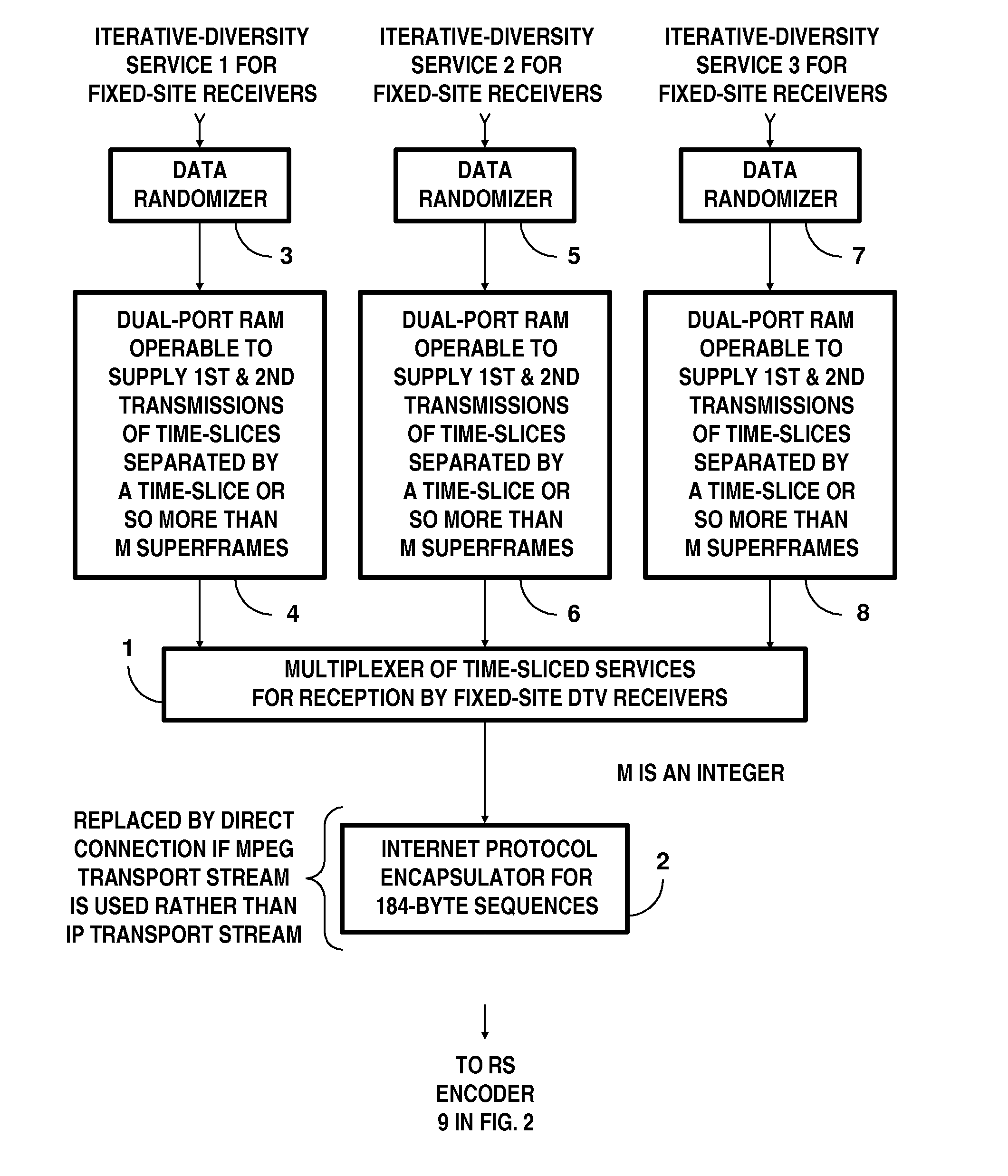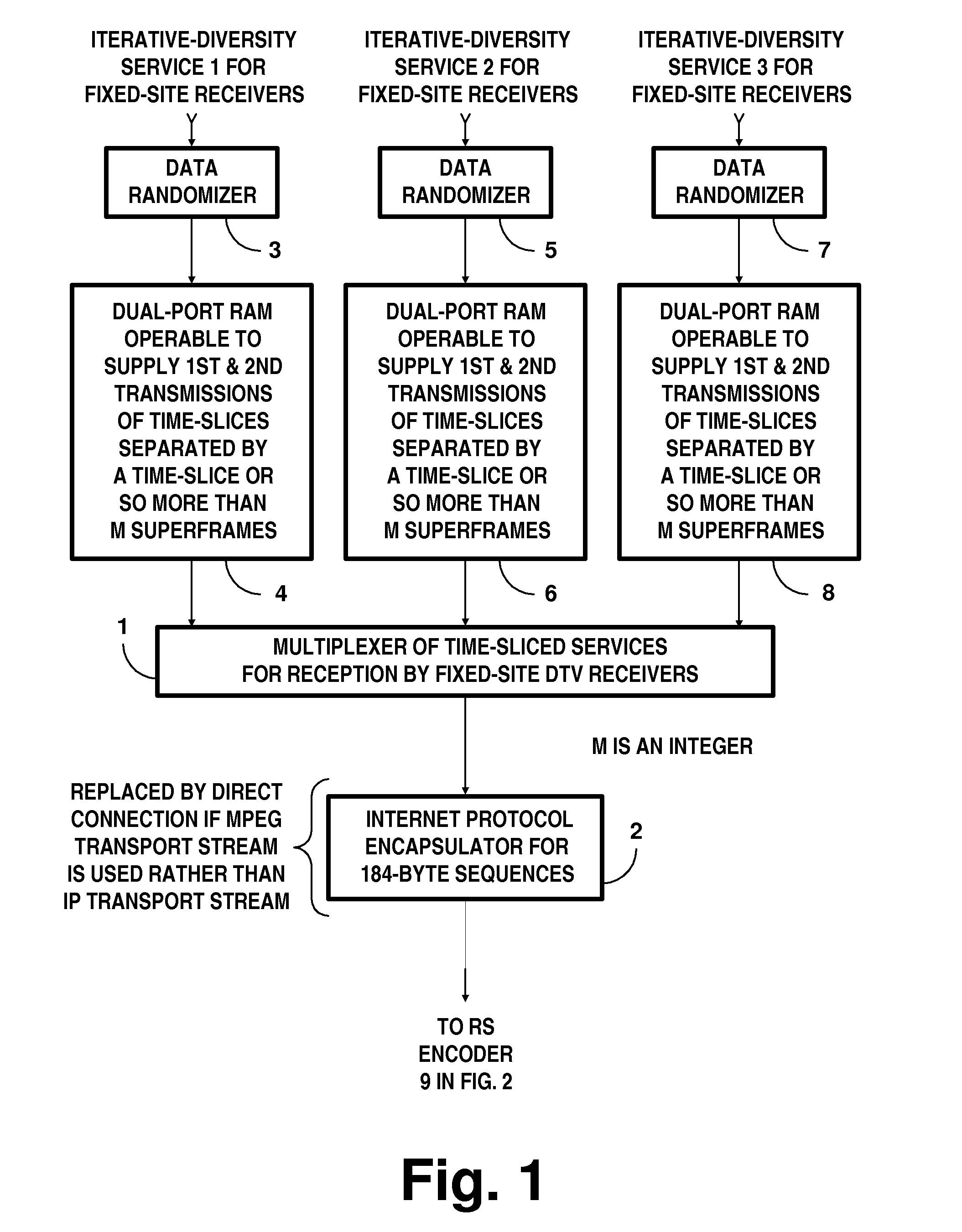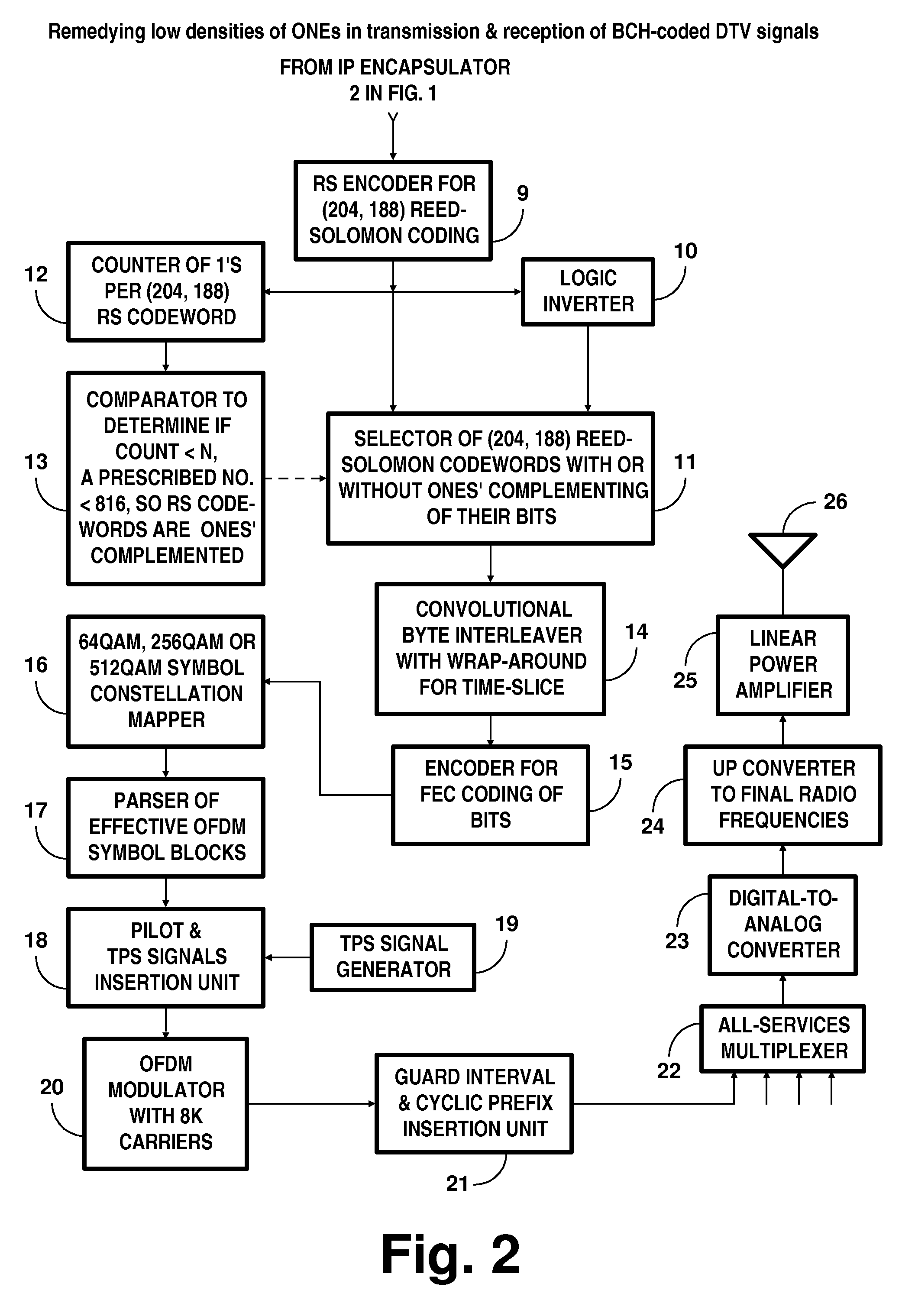Remedying low densities of ONEs in transmission and reception of digital television signals
a technology of digital television and packets, applied in the field of remedy, can solve problems such as the failure of advertising-supported over-the-air dtv as a commercially viable business, and achieve the effect of reducing the payload
- Summary
- Abstract
- Description
- Claims
- Application Information
AI Technical Summary
Benefits of technology
Problems solved by technology
Method used
Image
Examples
Embodiment Construction
infra refers particularly to a DTV broadcast system employing COFDM, since it is more likely that COFDM will be reconsidered as a replacement for 8VSB DTV broadcasting in the USA than changes will be made in 8VSB DTV broadcasting which would obsolete DTV receivers already in the field.
[0009]Packets of digital data for DTV broadcasting quite often include long sequences of ZEROs. Low densities of ONEs in packets of digital data for DTV broadcasting tend to cause problems with generating codewords with large Hamming distances—i.e., codewords that differ in so many bit-places from each other as to be distinguishable readily one from another. Codewords with large Hamming distances are better received than codewords with smaller Hamming distances during reception over Rayleigh channels. A customary approach taken to overcome low densities of ONEs in digital data is to exclusive-OR a pseudo-random binary sequence of some length with the digital data in serial-bit form. Such procedure conv...
PUM
 Login to View More
Login to View More Abstract
Description
Claims
Application Information
 Login to View More
Login to View More - R&D
- Intellectual Property
- Life Sciences
- Materials
- Tech Scout
- Unparalleled Data Quality
- Higher Quality Content
- 60% Fewer Hallucinations
Browse by: Latest US Patents, China's latest patents, Technical Efficacy Thesaurus, Application Domain, Technology Topic, Popular Technical Reports.
© 2025 PatSnap. All rights reserved.Legal|Privacy policy|Modern Slavery Act Transparency Statement|Sitemap|About US| Contact US: help@patsnap.com



